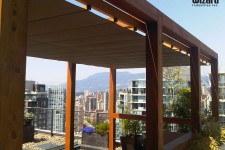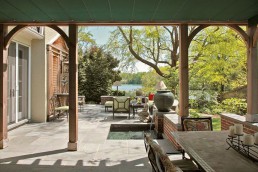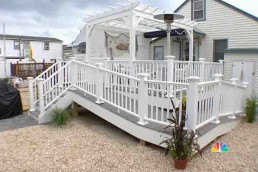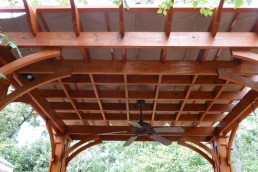Protecting Retractable Canopies in the Wind
It’s that time of year when the winds are picking up. In California it’s the Santa Anas. On the east coast it’s the Noreasters, and in your backyard, wherever you are, there may be a canopy system vulnerable to these seasonal forces. There are a number of options for protecting retractable canopies in the wind. I will outline them all so you can choose the one best suited for you.
The options can be divided into two fundamental groups. The first is in regards to the early stages of the decision making process. Before you have ordered your canopy, there are features you can specify to maximize durability against wind. For those with an existing and installed canopy, there are features you can add to the structure if you want to keep it in place, or practices to consider if you are going to place it into the garage for winter storage. Yes you can have a wind sensor retract the canopy in high winds, but they are designed to protect typical awnings, so they will retract the canopies long before necessary to retract the ShadeFX design. It is appropriate to point out that you would probably not want to be out and under a canopy with 30 mph winds anyway. So consider wind sensors.
That being said, let’s look at new specification considerations first.
Most wind damage is done when the fabric flaps in the wind. Constant flapping will wear and fray regardless of the canopies strength, even the best fabric will break down and fatigue. If you live in a high wind area, here’s what you want to order… or not:
Standard Valances
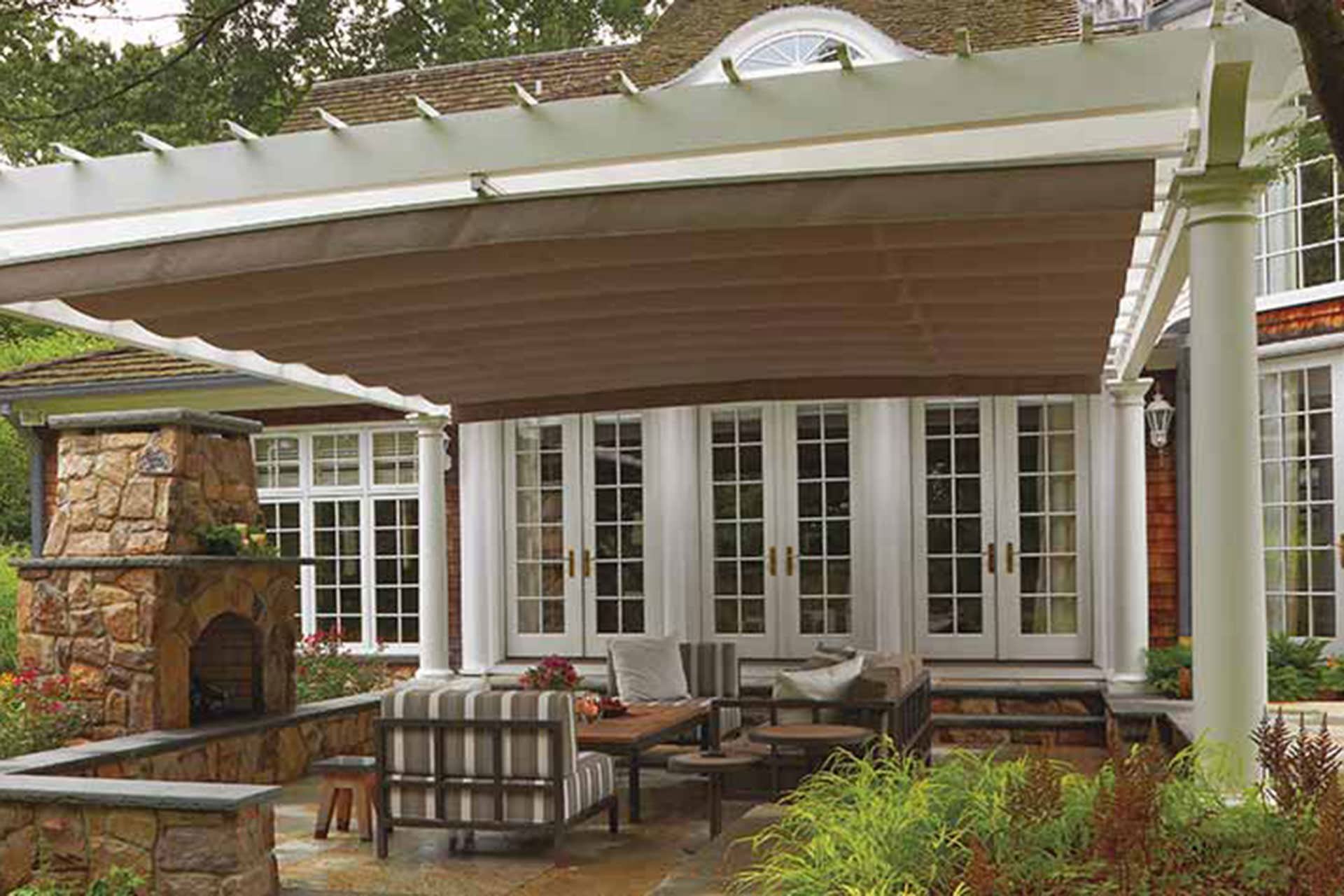
These are the flaps of fabric that hang down at both the front, and the back of the canopy, providing the finishing touch that moves nicely in a breeze. Unfortunately these can flap violently in the wind and should be excluded on your ShadeFX canopy order form.
Custom Valances
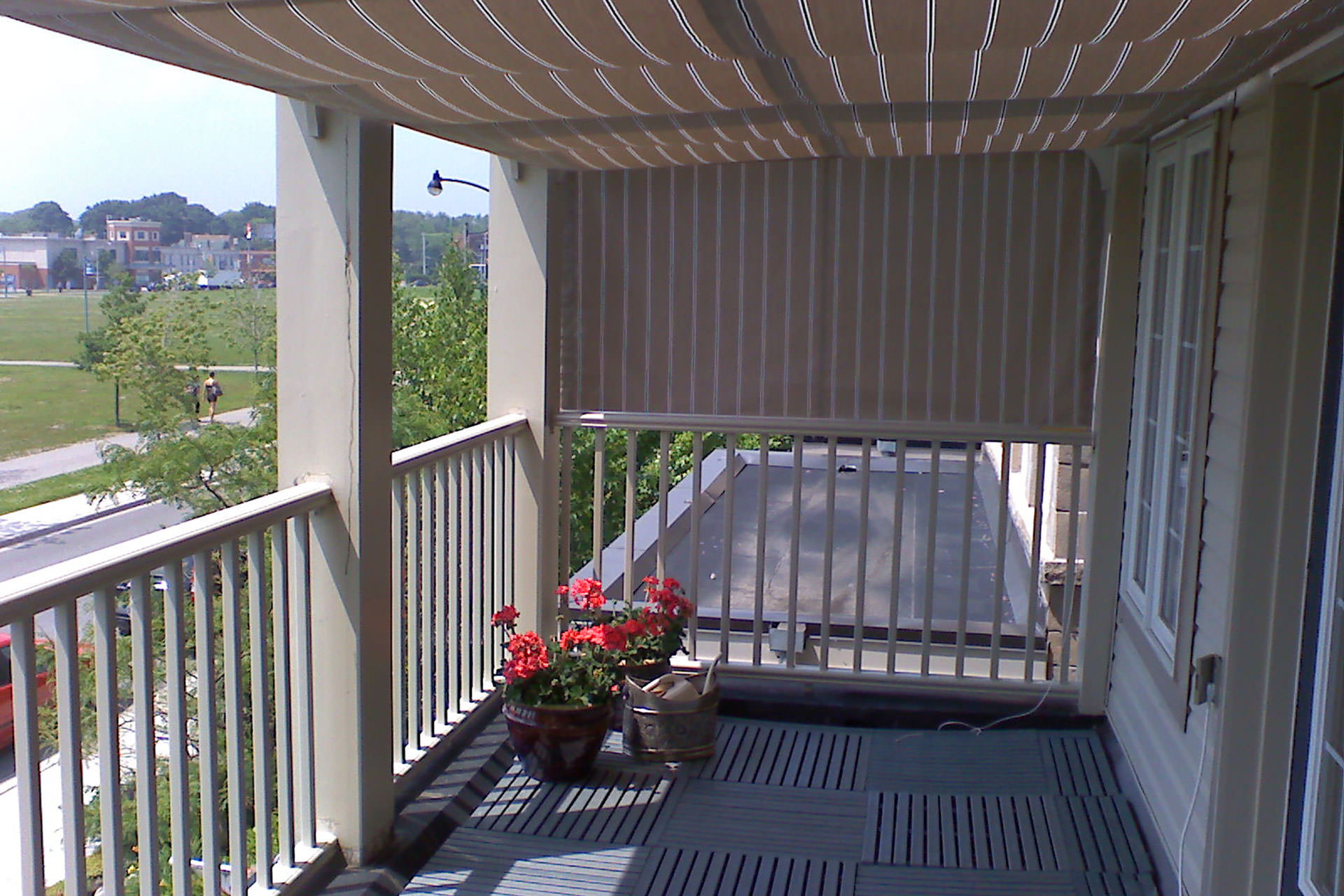
ShadeFX offers the option to extend valances, but more importantly to have an extra ‘wing’ support added to the end of that valance. This provides an anchor point for the end of the valance to be attached to a post or wall. This creates a back ‘closure’ for the canopy to rest behind and does two things: It resists the wind from the back protecting the canopy, and if the wind is from the front it provides a backstop for the canopy to rest against. So, flapping and swinging is greatly limited. This feature is highly recommended for high wind installations.
Edge seams
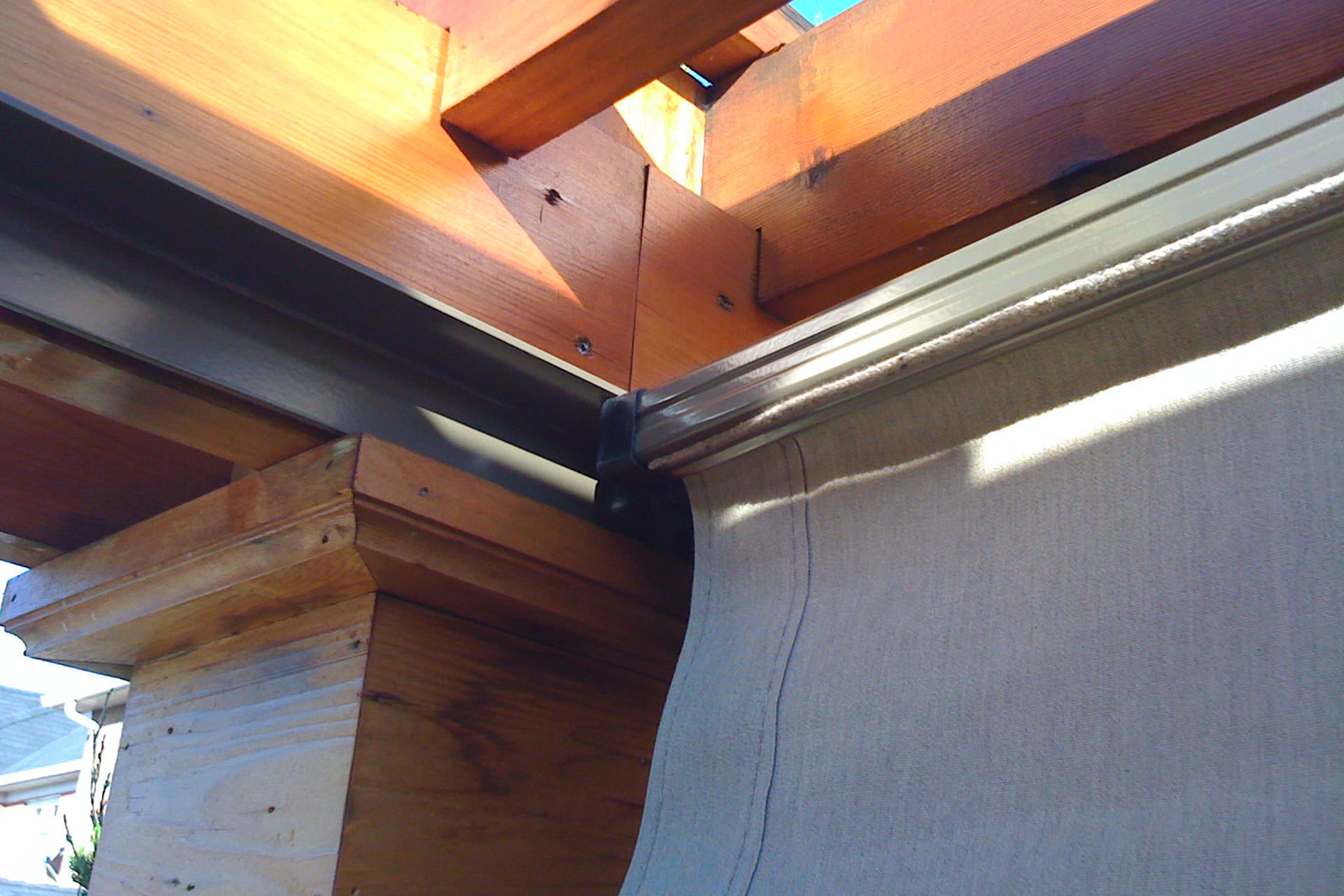
This option is rarely needed, but if your canopy experiences high wind exposure for extended periods of time like on the coast, you should consider edge seams. To make them suitable to rain, the seams fold down so they are also an aesthetic consideration.
Extra Wings or Reduced Canopy Drop
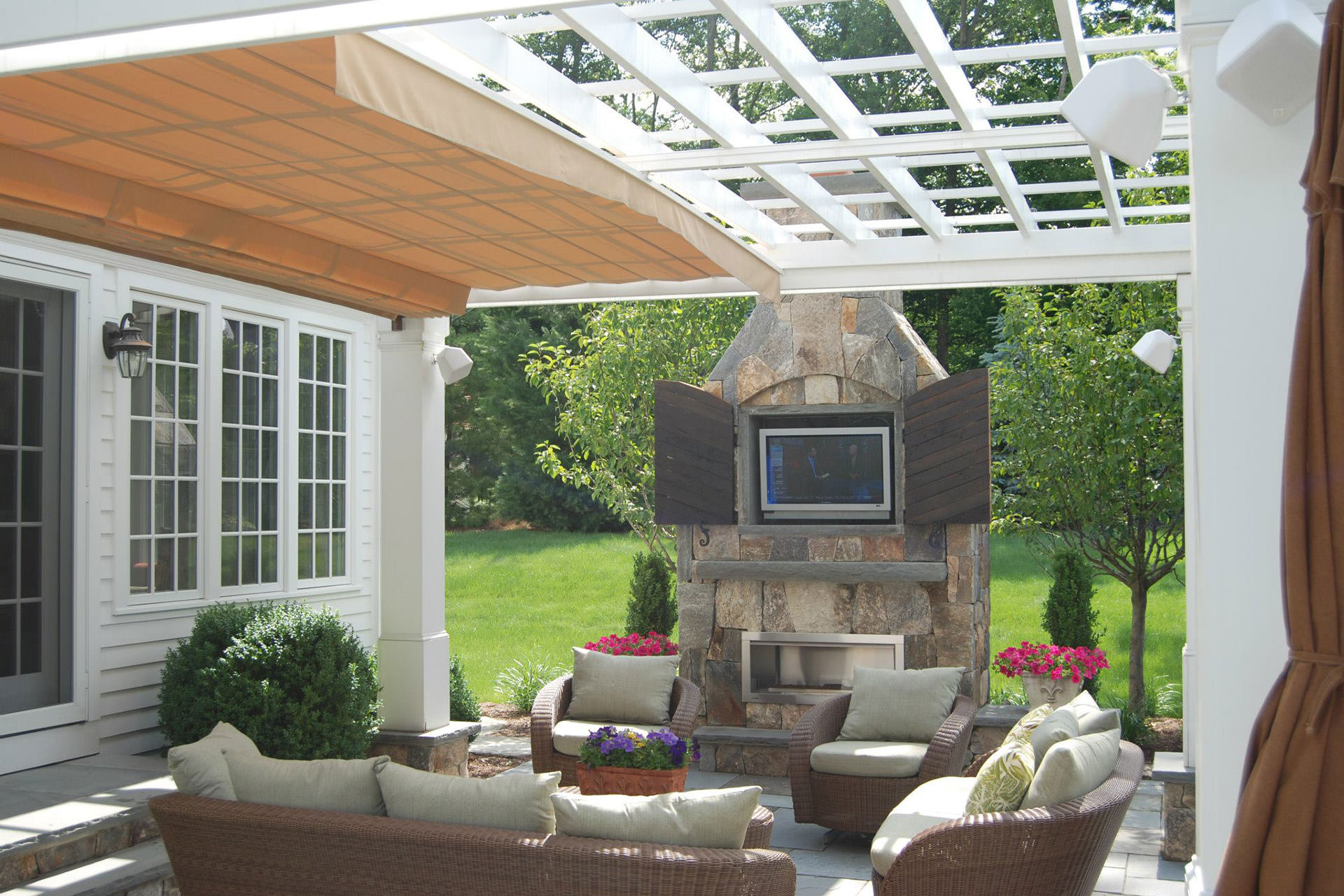
More wings reduce the distance that each panel of fabric spans. The distance the fabric folds down is also reduced. This makes it more difficult for the wind to ‘flap’ the folded fabric and thereby reduces wear on the canopy system.
If you choose to apply all of these features to your canopy system, you will enjoy even the windiest days knowing that the only thing the wind will be wrecking is your hair, and even that’s probably a long shot.
Now we’ll look at already installed canopies.
Many of our customers ask about canopy ‘covers’. We tend to lead them towards the rigid format, where they are made from wood or aluminum to cover the retracted canopy. We do not recommend anything that will enclose the canopy like a bag or a tarp. These features will attract wildlife, and if you choose one of them, a replacement canopy is about 50% the price of a new canopy system. (☺ your welcome.)
Looking at the fabricated covers, the picture below shows what we recommend in section from the front. Make it out of quality plywood or 1X12 in a matching material to your pergola.
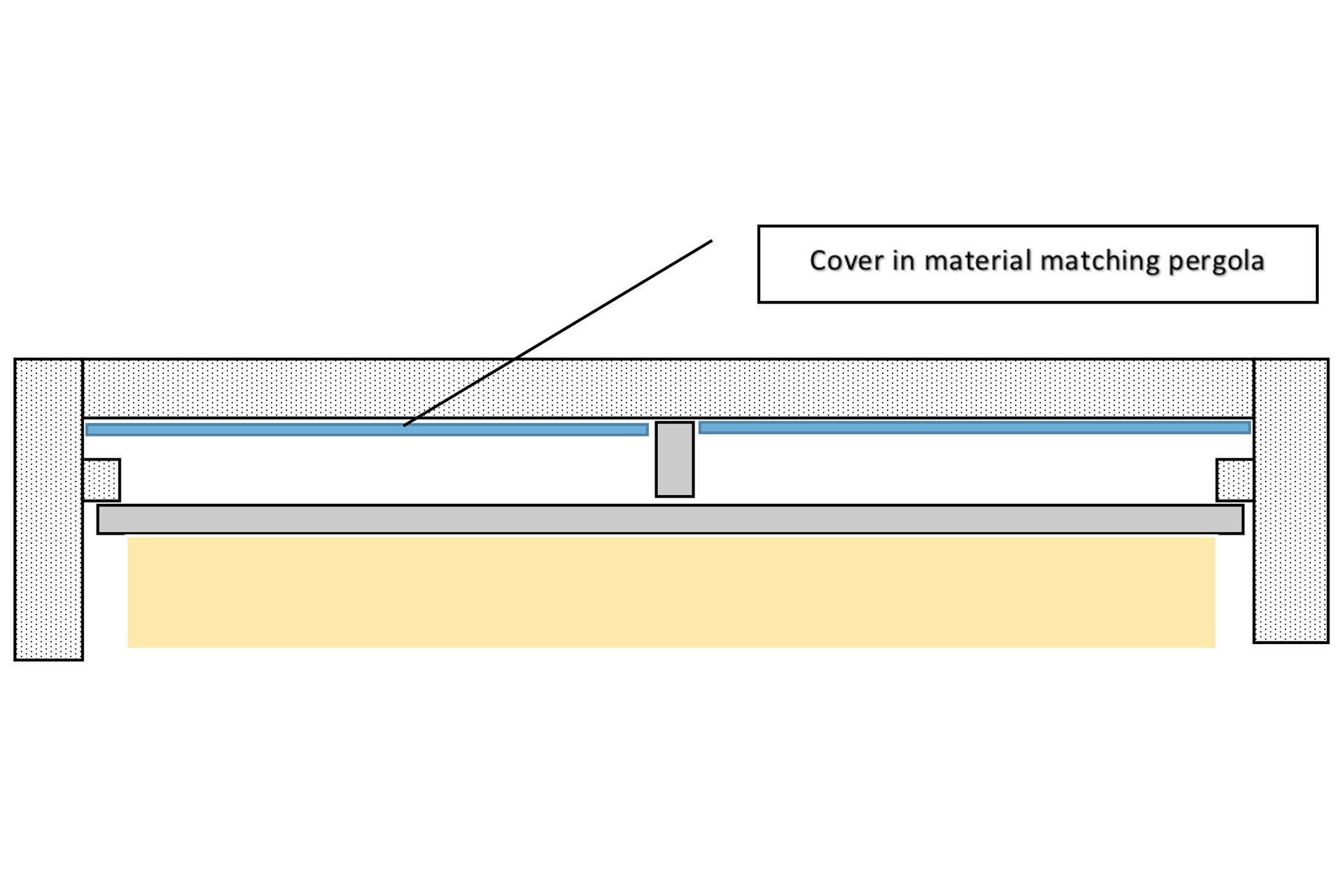
It is important that you allow the canopy to be unencumbered, enabling it to move in the wind and shed rain as it is normally sloped. So, avoid any efforts to stop the canopy from moving in the wind, like lashing it with bungee cords or rope. In the image above, the canopy is under the cover when retracted and the cover is behind the canopy when extended, so the aesthetic compromise is minimal.
For added protection you can put a vertical panel at the back to protect it from windage, the result is the same as the extended valance described above.
Finally, you can remove the canopy for storage. This is an option that has some risk associated with it. The chances of handling a large canopy on the way down, rolling it up and putting it in a garage without nicking a corner or scraping an edge is slim enough to consider leaving it where it is. If you want it down anyway, make sure you do it with a friend or two to avoid handling damage. Also ensure it is rolled tight enough to discourage small vermin from making a nest of it. If you wrap it in anything make sure it is absolutely dry before doing so.
At the end of the day I have said many a time that we at ShadeFX have two customers. One pays for the premium materials and appreciates the nuances of quality and the small pleasures that come from living with beautiful things. They take the canopy down in the fall and reinstall it in the spring with great love and care. Then there are the customers that pay for premium materials and rely the high technology to ensure longevity of the product with little or no maintenance. Though maintenance free is a goal for all practical people, a little tender love and care can go a long way to keeping your ShadeFX looking better longer.
So this begs the question…Which Customer are you?
Retractable Solutions for Outdoor Spaces
Please complete the form below to download our free eBrochure.
Price List included
